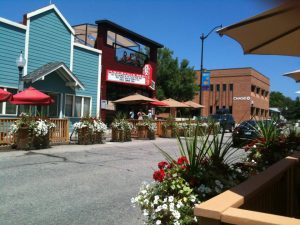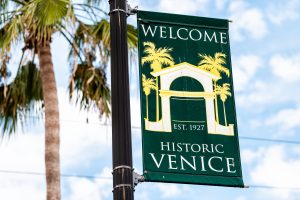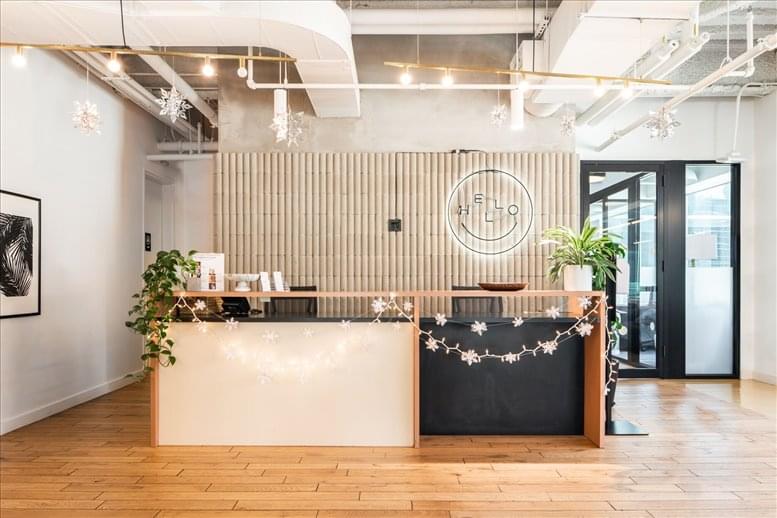Posted on March 17th, 2020
Las Vegas is one of the most visited cities in the United States and has managed to grow as a distinct economic hub despite its location on the Mojave Desert. The city was originally established as a stopping point for important trade routes between the Midwest and the Pacific Coast, and eventually grew to become one of the 30 most populated cities in the nation.
Las Vegas Business Environment
The local industry is clearly dominated by tourism, hospitality, leisure, and entertainment. There is also a large number of government and healthcare agencies, along with professional and business services firms, that support tourism-related activities.
Las Vegas is an internationally renowned hub for business conferences, meetings, and conventions, and the business events industry supports more than 66,000 jobs in the city. Since 2012, efforts and investment have been put into building a strong technology sector in Las Vegas, offering financial support and real estate discounts to tech companies. However, the tech talent pool is still small relative to other cities where similar initiatives have been implemented. A similar trend is evident across the state of Nevada, where the tech sector barely accounts for 2.5 percent of all economic activity. Read More »
Tags: Business Advice, business centres, Las Vegas
Posted in Best Cities for Business in the USA, Business Advice, Las Vegas | No Comments »
Posted on February 2nd, 2020
 The Wall Street area is internationally renowned as the world’s financial capital and is an exceptional place to do business. Wall Street itself is a 0.5-mile long artery located between Broadway and South Street, and has a high concentration of highly successful banking and financial headquarters as well as large corporates.
The Wall Street area is internationally renowned as the world’s financial capital and is an exceptional place to do business. Wall Street itself is a 0.5-mile long artery located between Broadway and South Street, and has a high concentration of highly successful banking and financial headquarters as well as large corporates.
Stock trading activities have been taking place in Wall Street since the 19th century. Today, Wall Street is a hub for firms involved in investment banking, private equity, hedge funds, and asset management. Although finance, banking and insurance are clearly predominant in the area, tourism is also an important industry, since Wall Street and the adjacent alleys are one of the premier tourist destinations within New York City. This area is home to important landmarks, such as the Lincoln Center, the Federal Reserve Building, and the Museum of American Finance.
Some of the most important organizations based in Wall Street are the New York Stock Exchange, Manhattan Chase Bank, Charles Swab, Deutsche Bank, Bank of America, Morgan Stanley, Goldman Sachs, Deloitte, BlackRock, Citibank, but there is also a large number of businesses involved in the food services and leisure, which cater to the area’s tourists and daytime population.
Wall Street is known for attracting some of the brightest talent around, and although the recession caused job losses, employment gains have been evident for some time. There are many corporate recruiters based in Wall Street, including Michael Page, Amity Search Partners, Oxbridge, Foster McCay Group, Smith Hanley, SG Partners, and Glocap Search. However, the area is no longer the largest employment hub in the city, since that position now belongs to the Silicon Alley area located in Midtown / Lower Manhattan. Read More »
Tags: Business Districts, Business Start Ups, new york, Office Space, Wall Street
Posted in Business Districts, Manhattan, New York | No Comments »
Posted on January 14th, 2020
 Louisville is a mid-sized urban center in Boulder County with a population of approximately 20,000 people. The city has a central location within Colorado and is within easy reach of other major cities, with Denver only a 30-minute drive away and Boulder just 10 minutes to the west.
Louisville is a mid-sized urban center in Boulder County with a population of approximately 20,000 people. The city has a central location within Colorado and is within easy reach of other major cities, with Denver only a 30-minute drive away and Boulder just 10 minutes to the west.
Key Industries and Employers in Louisville, Colorado
Key industries in Louisville include education, real estate, healthcare services, retail, trade, transportation, finance, and leisure. The city’s industry base is reflected in the list of main employers, which are Avista Adventist Hospital (with nearly 700 employees), telecommunications firm Zayo Group, the Sierra Nevada Space Corporation, the City of Louisville, Fresca Foods, Balfour Senior Living, and technology solutions company Medtronic.
The labor market in Louisville generally evidences low unemployment levels, which at an average of around 3.5 percent are well below the national average. The number of college graduates is above the US average, standing at nearly 70 percent (compared to 28 percent US-wide), and 35 percent of Louisville residents have a graduate degree. Self-employment levels are 18 percent higher than those in the Denver – Aurora metropolitan area. Read More »
Tags: Colorado, Louisville, Office Space
Posted in Business Districts, Office Space Forecasts and Trends | No Comments »
Posted on October 1st, 2019
 The city of Venice is located on Florida’s west coast, approximately 20 miles south of Sarasota and 60 miles away from Fort Myers. Administratively, Venice is part of Sarasota County and has a permanent population of over 22,000 people, although this figure increases during the winter months, when many snowbirds move to the city temporarily.
The city of Venice is located on Florida’s west coast, approximately 20 miles south of Sarasota and 60 miles away from Fort Myers. Administratively, Venice is part of Sarasota County and has a permanent population of over 22,000 people, although this figure increases during the winter months, when many snowbirds move to the city temporarily.
Key Industries and Employers in Venice, Florida
In its origins, the city’s economy relied on agriculture, fishing, and trade, but currently Venice has a diverse economy that has so far been able to weather the global economic downturn. The largest industries are healthcare and educational services, followed by retail, trade, accommodation and food services, finance, insurance, and manufacturing. Tourism and recreation are also essential to Venice’s economy due to the city’s seaside location and proximity to several natural reserves.
Key employers in Venice include manufacturing firms PGT Industries, which was named one of Florida’s best employers by Forbes (with over 2,800 employees) and Tervis Tumbler, Venice Regional Bayfront Health, Bon Secours Venice Healthcare, and Publix Supermarkets.
Venice has seen a marked increase in the job market over this last year (2019) of 2.6%, with only a slightly lower unemployment rate (3.3%) than in the rest of the US (3.9%). Predictions show future job growth over the next decade to be just over 42%. Venice resident’s average income comes in at just under $40,000 a year, which is higher than the average income across the US and currently stands at just under $30,000 annually. Read More »
Tags: Business Advice, Florida, Office Space, Venice
Posted in Business Advice, Florida | No Comments »
Posted on June 25th, 2019
 New York City is home to more than 500 million square feet of office space, which make it one of the world’s largest office markets. While that seems a large amount, space shortages are a reality, and not only in terms of the offices available. Rising rental values mean that many New York companies are choosing to downsize or to make changes to their office layout to maximize space and cut costs. Nowadays, it is not uncommon for companies to move to office premises that are up to 25 percent smaller, yet the amount of people sharing that space remains the same.
New York City is home to more than 500 million square feet of office space, which make it one of the world’s largest office markets. While that seems a large amount, space shortages are a reality, and not only in terms of the offices available. Rising rental values mean that many New York companies are choosing to downsize or to make changes to their office layout to maximize space and cut costs. Nowadays, it is not uncommon for companies to move to office premises that are up to 25 percent smaller, yet the amount of people sharing that space remains the same.
Another way in which the amount of office space allocated to each staff member is getting scarcer is because of current trends towards open plan offices and collaborative spaces. The concept of the sharing economy has extended into office design and space allocation, with shared workspaces becoming increasingly more common, which means individual desks are being replaced by large long tables. In fact, New York leads the nation’s provision of shared office space, and even in traditional offices there have been changes in the desk space – meeting or collaborative space ratio, with the balance switching towards the latter.
Read More »
Tags: new york, Office Space, Office Space Trends and Forecasts
Posted in New York, Trends and Statistics | No Comments »
Posted on July 27th, 2017
 The following is the sixth in our series focusing on providing information on the various types of office space available, from business parks to hot desking and project space, business incubators, conventional office accommodation to virtual office space options, managed offices to shared co-working options.
The following is the sixth in our series focusing on providing information on the various types of office space available, from business parks to hot desking and project space, business incubators, conventional office accommodation to virtual office space options, managed offices to shared co-working options.
Typically located in business districts of larger cities, serviced offices are becoming more of a standard and less of a trend for today’s small business owner. And why not? Renting a serviced office space cuts down on a number of issues and costs associated with having an office. Most importantly, rental of a serviced office space provides an immediate solution to the office space problem.
The Whole Package
Serviced offices are ready to go as soon as you sign the agreement. There is very little delay between deciding to open an office and actually having an office ready for business.
Serviced offices are usually rented on a month to month basis, as opposed to the long term three to five year commitment of a traditional office space lease. The monthly rent may appear to be slightly higher than the traditional lease price, but the whole package aspect of serviced offices makes them a better deal. New businesses, start-ups, and small businesses may neglect to calculate the additional costs of furnishings, equipment, and staff when they consider opening an office. The whole package concept eliminates the worry of those forgotten expenses.
Rental costs frequently include the costs of:
Furnishings
Businesses can begin straight to work on the first day without any delays waiting for deliveries of desks, lamps, bookshelves, or chairs. A serviced office includes all of these. In addition, conference rooms, kitchens, meeting spaces, and other shared amenities are available as needed. Conference rooms, for example, can be rented by the hour as an addendum to your office space lease. Read More »
Tags: Office Space, Serviced Office Space
Posted in Business Start Ups, Office Organization, Office Space Options Series | No Comments »
Posted on June 24th, 2017
 The following is the fifth in our series focusing on providing information on the various types of office space available, from business parks to hot desking and project space, business incubators, conventional office accommodation, managed offices to shared co-working options.
The following is the fifth in our series focusing on providing information on the various types of office space available, from business parks to hot desking and project space, business incubators, conventional office accommodation, managed offices to shared co-working options.
For a business in need a prestigious office address and presence without an office lease, virtual office options are a great solution.
What is a Virtual Office?
A virtual office is a most effective solution to the dilemma faced by small businesses and entrepreneurs. Virtual offices provide an address, usually in a recognized business district, and other amenities that allow users to maintain a professional image without having to maintain a high cost conventional office space.
Why have a Virtual Office?
A virtual office allows work from home entrepreneurs more economic efficiency. Having a virtual office helps retain the image of a traditional business, with a professional office address, without the expense of renting an office in the business district. Virtual office users have the benefit of being able to flexibly match expenses with incomes increasing or decreasing the services as their revenue fluctuates.
Virtual offices can help reduce overhead while maintaining a high level of professionalism. They provide you with both communication services and physical space services, based on your need and determined by you.
What is included?
Generally, a virtual provider offers a business address and mail handling services, at the least. At the most, programs will include physical offices, dedicated phone lines with receptionist service, and meeting spaces. Virtual office services offer a variety of packages that include some or all of these amenities. Some services allow you to customize a package to suit your particular needs. Read More »
Tags: Office Organization, Office Space, office space options, Virtual Office Services
Posted in Business Start Ups, Office Organization, Office Space Options Series, Virtual Offices | No Comments »
Posted on May 29th, 2017
 The following is the fourth in our series focusing on providing information on the various types of office space available, from business parks to hot desking and project space, business incubators, conventional office accommodation to shared co-working options.
The following is the fourth in our series focusing on providing information on the various types of office space available, from business parks to hot desking and project space, business incubators, conventional office accommodation to shared co-working options.
For a personalized office without purchasing an office building or committing to a long term lease, consider a Managed Office Space.
Perhaps you’ve seen those signs in the business district Leasing: will build to suit. Those signs are symbolic of the benefits of a managed office space. Managed offices are not cookie-cutter offices. A managed office space can be built to suit, can be designed to meet the specific needs of your business.
Aren’t Managed Offices the same as Serviced Offices?
Like serviced offices, managed offices are typically rented fully furnished and equipped for immediate occupation. Also like a serviced office, a managed office space is rented on pay as you go type flexible terms. Unlike a serviced office, managed offices are usually not located in the uptown glass tower high rise office structure. They are generally located in smaller buildings and in buildings with more personality.
There are two key differences between a serviced office and a managed office: location and branding and clerical services.
Branding
Managed offices are not attached to the brand of the office building they are open to your own branding. A managed office is tailored to your specifications, with your branding and your workspace requirements. Frequently managed office providers will handling the entire office set-up for you. Some of the processes handled by the provider are decorating and design requirements; tailoring the space to your needs; procuring of furniture, IT, communications systems; managing the IT and communications maintenance; and, if needed, locating the ideal building and negotiating the lease for the space. Ideally, the managed office provider finds and creates for you the exact vision you have for your business. Read More »
Tags: Managed office space, office options, Office Space
Posted in Business Advice, Business Start Ups, Office Space Options Series | No Comments »
Posted on April 27th, 2017
 The following is the third in our series focusing on providing information on the various types of office space available, from business parks to hot desking, business incubators, conventional office accommodation to shared co-working options.
The following is the third in our series focusing on providing information on the various types of office space available, from business parks to hot desking, business incubators, conventional office accommodation to shared co-working options.
Project/Team Space
Creating a dedicated place in your office space for teams to work on projects is one of the most overlooked yet most beneficial features of a work place. Especially for a business where collaboration is expected and team work is the status quo.
Dedicated Project Workspace
Having a dedicated space, means that project teams can begin their meetings quickly, as the space not only contains the work remnants of their last meeting, but also creates a mindset of lets do this .
Ideally this team project work space is dedicated to the specific project, and team members can leave their work product lying around in that space between meetings.
For example, Google Ventures calls their project space the War room. It has nearly floor to ceiling whiteboards, flexible and moveable furnishings, so the room can be set up with couches, with tables if needed, with roundtable type chair groupings whatever the need, the room can be manipulated to meet that need. Read More »
Tags: office options, Office Space, project space
Posted in Business Advice, Office Space Options Series | No Comments »
Posted on March 28th, 2017
 In line with global trends, demand for creative space is also on the rise in Texas’ largest city. Houston’s creative sector has been described as a ‘sleeping giant’ due to its enormous potential to become one of the leading sources of income and employment in the Lone Star state. Currently, over 113,000 Houston companies are involved in this sector, which generates $25b in sales and employs nearly 180,000 people across the state.
In line with global trends, demand for creative space is also on the rise in Texas’ largest city. Houston’s creative sector has been described as a ‘sleeping giant’ due to its enormous potential to become one of the leading sources of income and employment in the Lone Star state. Currently, over 113,000 Houston companies are involved in this sector, which generates $25b in sales and employs nearly 180,000 people across the state.
In view of these figures, it is hardly surprising to see that companies in virtually every business sector are considering adding creative space to their business accommodation offerings. This is the case despite the dominance of the energy and engineering sectors, which typically are not as innovative as others, although they are beginning to understand the value of creative workspace and to realize that conventional office space presents some obstacles to innovation and creativity.
Below are some examples that showcase the most inspiring creative office spaces in Houston.
GreenStreet is a 570,000-square feet mixed-use commercial development that is home to several units that offer collaborative space in one of the city’s top locations. Creative space ranges from small floor plates to large work areas of up to 37,000 square feet, all of which are designed and furnished to facilitate collaboration and innovation. Units feature open plan space, private and shared offices, training and meeting rooms, kitchen, and dedicated break and wellness areas.
There is a great deal of creative space springing in Houston’s Midtown and Uptown, although over the past 5 years warehouse-to-office conversions have also become common along Washington Avenue, Montrose, and east of downtown. In Midtown, Wi+CoWork offers shared space to the local creative community on a membership basis. Office space at Wi+CoWork includes access to conference rooms, community events, and office support services. Read More »
Tags: Creative Workspace, Houston, Office Space, Texas
Posted in Best Cities for Business in the USA, Business Start Ups | No Comments »
 The Wall Street area is internationally renowned as the world’s financial capital and is an exceptional place to do business. Wall Street itself is a 0.5-mile long artery located between Broadway and South Street, and has a high concentration of highly successful banking and financial headquarters as well as large corporates.
The Wall Street area is internationally renowned as the world’s financial capital and is an exceptional place to do business. Wall Street itself is a 0.5-mile long artery located between Broadway and South Street, and has a high concentration of highly successful banking and financial headquarters as well as large corporates. Louisville is a mid-sized urban center in Boulder County with a population of approximately 20,000 people. The city has a central location within Colorado and is within easy reach of other major cities, with Denver only a 30-minute drive away and
Louisville is a mid-sized urban center in Boulder County with a population of approximately 20,000 people. The city has a central location within Colorado and is within easy reach of other major cities, with Denver only a 30-minute drive away and  The city of Venice is located on Florida’s west coast, approximately 20 miles south of Sarasota and 60 miles away from Fort Myers. Administratively, Venice is part of Sarasota County and has a permanent population of over 22,000 people, although this figure increases during the winter months, when many snowbirds move to the city temporarily.
The city of Venice is located on Florida’s west coast, approximately 20 miles south of Sarasota and 60 miles away from Fort Myers. Administratively, Venice is part of Sarasota County and has a permanent population of over 22,000 people, although this figure increases during the winter months, when many snowbirds move to the city temporarily. New York City is home to more than 500 million square feet of
New York City is home to more than 500 million square feet of  The following is the sixth in our series focusing on providing information on the various types of office space available, from
The following is the sixth in our series focusing on providing information on the various types of office space available, from  The following is the fourth in our series focusing on providing information on the various types of office space available, from
The following is the fourth in our series focusing on providing information on the various types of office space available, from  The following is the third in our series focusing on providing information on the various types of office space available, from
The following is the third in our series focusing on providing information on the various types of office space available, from  In line with global trends, demand for creative space is also on the rise in Texas’ largest city. Houston’s creative sector has been described as a ‘sleeping giant’ due to its enormous potential to become one of the leading sources of income and employment in the Lone Star state. Currently, over 113,000 Houston companies are involved in this sector, which generates $25b in sales and employs nearly 180,000 people across the state.
In line with global trends, demand for creative space is also on the rise in Texas’ largest city. Houston’s creative sector has been described as a ‘sleeping giant’ due to its enormous potential to become one of the leading sources of income and employment in the Lone Star state. Currently, over 113,000 Houston companies are involved in this sector, which generates $25b in sales and employs nearly 180,000 people across the state.